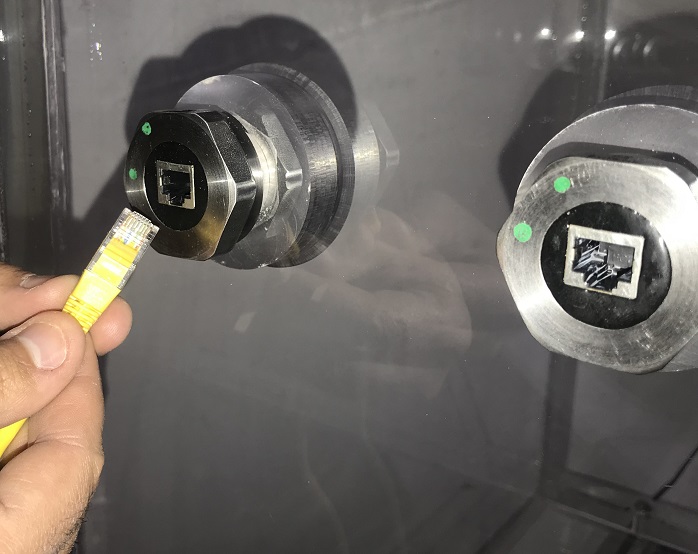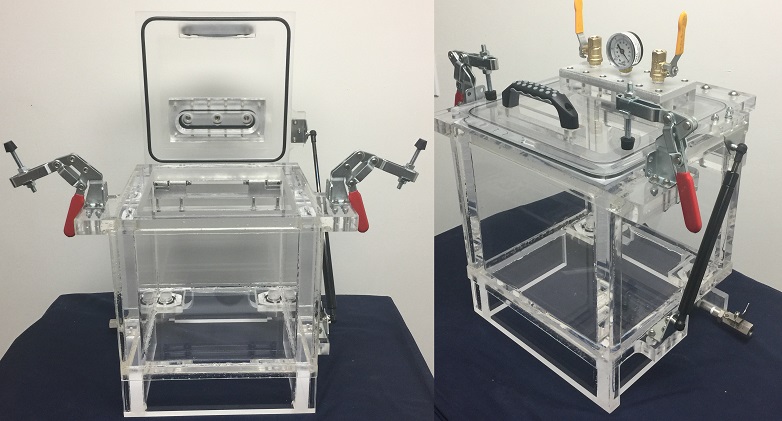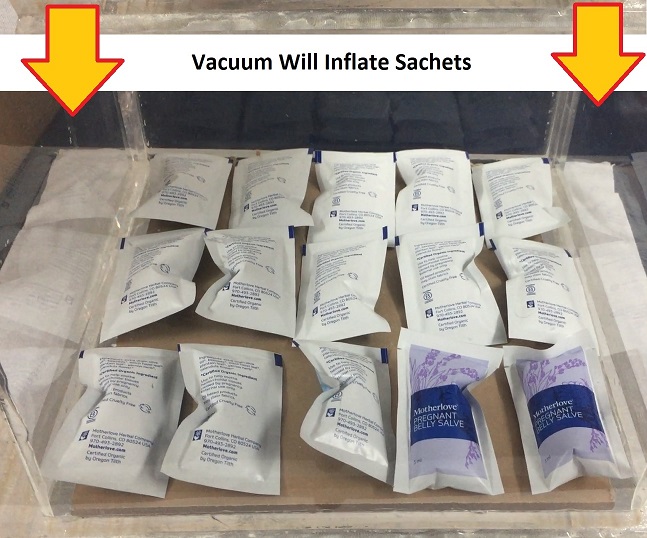Altitude Test Chamber, How Vacuum Chambers Simulate High Altitudes
Introduction
Ever wonder how aerospace instruments or satellite components are tested for the low pressures at high altitudes? Or how automakers ensure a car engine will run smoothly on a mountain pass? The answer lies in altitude simulation chambers, specialized vacuum chambers systems that mimic the low-pressure conditions of high altitudes. By pumping out air to create lower pressure inside a sealed chamber, these devices can reproduce the environment found thousands of feet above sea level. This technology allows engineers and scientists to accurately simulate any altitude in their laboratory. In doing so, they can rigorously test the performance and safety of products before those products ever face real conditions. From aerospace and automotive engineering to medical device testing and even athletic training, altitude chambers have become essential tools across many fields. They help ensure that equipment and people alike can withstand the challenges of thin air, all while keeping tests on the ground in a controlled, repeatable setting.
How Altitude Vacuum Chambers Work
Altitude simulation chambers (aka hypobaric chambers) operate on a simple principle: as altitude increases, the air pressure decreases. At sea level, the atmosphere presses around us at about 101 kPa (14.7 psi). At 10,000 feet (around 3,000 meters) altitude, the pressure is much lower, roughly 70 kPa (10 psi). In the extreme near-vacuum of space (above 100 km or ~328,000 feet), the pressure is essentially zero. An altitude chamber uses vacuum pumps to remove air and reduce internal pressure to the level corresponding to a desired altitude. By precisely controlling how much air is pumped out, technicians can dial in specific altitudes, whether it’s a moderate mountain height or the edge of space. Modern systems often integrate electronic pressure regulators and feedback sensors to hold the pressure steady or to create changing pressure profiles. For example, a chamber might rapidly decompress in seconds to simulate an airplane cabin losing pressure. Many altitude chambers are also equipped with heating and cooling systems, since temperature drops at high altitudes. This allows combined environment testing, for instance, checking if an electronic device works at 35,000 feet and -40°C simultaneously. The result is a highly controllable simulation of higher altitude environments. Engineers can place a product or even a live subject inside and observe how it behaves when the air gets thin or the temperature changes.
Critically, altitude chambers must be robust and well-sealed. They are generally made from Clear Acrylic or Stainless Steel with specially engineered O-Ring groove seals to withstand the pressure differential. If the chamber is made from stainless steel, thick acrylic windows or metal viewports may be installed so observers can watch the test article. Any cables or sensors going into the chamber pass through special feed-through ports (vacuum feedthroughs) that maintain the seal. Creating a low-pressure environment is not trivial: as pressure drops, it actually becomes harder to remove more air. High-capacity vacuum pumps, and sometimes multiple stages of pumping, are used to reach very high altitudes or vacuum levels. Some advanced chambers even achieve ultra-high vacuum (on the order of 1e-8 Torr) to simulate outer space conditions. Whether simulating a mild highland altitude or deep-space vacuum, these chambers are calibrated carefully so that the pressure reading inside truly matches the intended altitude. This calibration is a key part of vacuum validation, confirming that the chamber’s instruments accurately reflect the low-pressure conditions. Through routine validation and maintenance, operators ensure that their altitude test results are reliable and repeatable.
Ensuring Quality and Safety through Altitude Testing
Why go through all this trouble to simulate high altitudes on the ground? The answer is quality control and safety. Many products can behave very differently in thin air than they do at sea level. By testing in an altitude chamber, manufacturers can catch potential failures before they happen in the field. A classic example is any component that is sealed with gas or fluid inside, think of a battery, a sealed electronic module, or even a bag of chips. At high altitude, the external air pressure drops, but the pressure inside a sealed item may remain the same. This pressure difference can strain the enclosure. As a result, products have been known to bulge, leak, or even burst when exposed to low-pressure environments. Altitude chambers allow engineers to expose items to, say, 15,000 feet of altitude (about 57 kPa pressure) and observe if any seals start leaking or if internal fluids begin to out-gas. For instance, engineering tests have shown that components like capacitors or batteries sometimes vent electrolyte or rupture in a vacuum chamber simulating high altitude. Identifying such vulnerabilities in the lab means designs can be improved or manufacturing defects caught before shipping the product out.
An Altitude Testing System is also crucial for verifying that equipment continues to function properly in low-pressure conditions. An aircraft instrument might work fine on the ground, but at 40,000 feet the lack of cooling air and the low pressure could cause it to overheat or behave erratically. By running devices inside an altitude chamber, powered on and performing their duties, engineers can ensure performance doesn’t degrade at altitude. This practice is common in aerospace and defense industries, where standards require altitude qualification tests. For example, military standard MIL-STD-810 and electronic standard IEC 60068 include low-pressure tests that products must pass to be certified for high-altitude operation. These tests often involve holding the unit at a high equivalent altitude for several hours, and sometimes cycling the pressure up and down, to mimic ascent and descent. Passing such tests gives confidence that the product will be reliable from the ground up to the sky. In essence, an altitude chamber becomes an accelerated proving ground for quality control, revealing issues in hours that might otherwise only appear after a plane has taken off or a device is deployed to a mountaintop.
Vacuum chambers for altitude simulation also play an important role in validating the performance of the chambers themselves and associated vacuum equipment (vacuum validation). Facilities will frequently use reference instruments to check that the chamber pressure sensors and controls are accurate. They might perform a vacuum pump down test, evacuating the empty chamber to a certain pressure and then measuring any rise in pressure over time to ensure the chamber holds vacuum properly. This kind of validation ensures the test conditions are truly what they claim to be. After all, if the absolute pressure gauge is misreading, a test may give false positive or false negative results. Therefore, strict calibration schedules are maintained so that the simulated 30,000 feet is really 30,000 feet, not 25,000 or 35,000. Such attention to detail in vacuum validation upholds the integrity of every altitude test, which in turn safeguards the quality of the products being tested.
Conclusion
Vacuum chambers designed for altitude simulation are a prime example of engineering letting us explore extreme conditions without leaving the lab. They operate on straightforward physics, pumping out air to lower pressure, yet their impact is far reaching across industries. By replicating the vacuum conditions of a mountaintop or the void of space, these chambers enable aerospace engineers to validate spacecraft integrity, allow automotive designers to fine-tune engines, and help medical manufacturers ensure medical devices remain reliable in any environment. These examples from different sectors all underline a common theme: testing under real-world conditions is key to quality. Altitude chambers provide that real-world context in a safe, controllable way. A satellite can’t afford to fail once it’s in orbit, so we create orbit-like vacuum conditions on Earth to test it thoroughly. A car shouldn’t stall on a high pass, so we simulate that pass in a chamber. A medical package cannot leak on a flight, so we test it in low-pressure before shipping. In each scenario, altitude simulation is about anticipating challenges and validating solutions ahead of time.
Equally important is how these chambers contribute to innovation. They give engineers the freedom to experiment: What happens if we drop the pressure a bit more? How does our device react if the temperature also falls to -50°C? By observing failures and successes in the chamber, design engineers improve their products in ways that might not be obvious at normal atmospheric pressure. Over the decades, this has led to more ruggedized electronics, safer aircraft, better performing cars, and more dependable medical equipment. And beyond industry, altitude chambers have opened new frontiers in research, helping unravel the effects of hypoxia on the human body, preparing athletes to break records, and simulating otherworldly environments for science. In short, altitude vacuum chambers are unsung heroes in technology and research. They let us test the limits under controlled conditions and bring back insights that fuel progress. As long as we continue to push higher, flying further, climbing taller, reaching for space, these chambers will remain a critical tool to ensure that what we build and whom we train are ready for the journey from sea level to the stars.
Related Articles:
■
High Altitude Package Testing utilizing an Acrylic Vac Chamber
Similar Items
We treat our customers well by Over-Delivering on our Promises (reason why we are Highly Rated on Google My Business). Check out some of our other items we carry that you can combine/integrate with your systems or projects.
Complete List of Articles Related to Acrylic Vacuum Chambers





